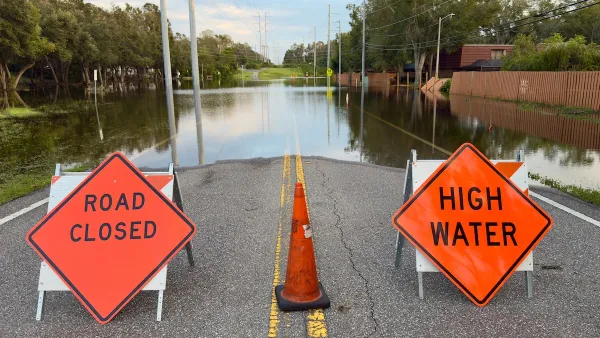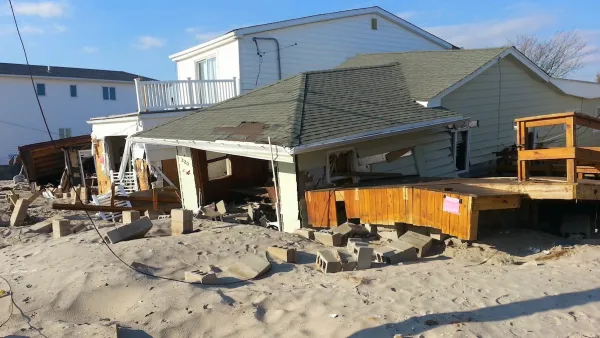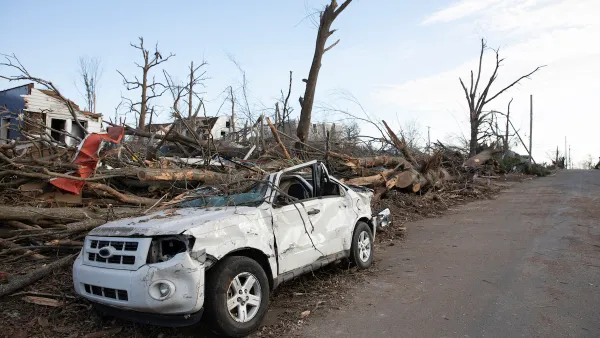Justin Gillis outlines some harsh criticisms of disaster response efforts that rebuild without rethinking – and how much it's costing taxpayers across the country.
In the wake of Hurricane Sandy, some $30 billion will be issued in disaster relief and assistance to help return communities to stable, working, livable condition. Yet the critical moment of a disaster response is not in the rebuilding of a place but the changes it undertakes to ease the blow the next time around.
As Gillis points out, "Since 1979, nearly a dozen hurricanes and large storms have rolled in and knocked down houses, chewed up sewers and water pipes and hurled sand onto the roads." And yet homeowners across the country continue to flock to the shores, rebuilding entire communities just as they were before, invariably at enormous taxpayer expense.
Partly to blame are generous subsidies for flood insurance and new infrastructure – the Stafford Act provides federal dollars for 75 percent of repairs to storm-damaged roads and utilities. Perhaps just as much to blame are attitudes toward disaster planning.
“We’re Americans, damn it,” quips North Carolina Geologist Robert S. Young, capturing the response strategy in many communities. “Retreat is a dirty word.”
Meanwhile, a number of Vermont towns that fortified inadequate culverts after Hurricane Irene last year are still struggling for reimbursement from FEMA.
In some communities, resistance to change is strong, and solutions are scarce. “The best thing that could possibly come out of Sandy is if the political establishment was willing to say, ‘Let’s have a conversation about how we do this differently the next time,’ ” said Young. “We need to identify those areas — in advance — that it no longer makes sense to rebuild.”
FULL STORY: As Coasts Rebuild and U.S. Pays, Repeatedly, the Critics Ask Why

National Parks Layoffs Will Cause Communities to Lose Billions
Thousands of essential park workers were laid off this week, just before the busy spring break season.

Retro-silient?: America’s First “Eco-burb,” The Woodlands Turns 50
A master-planned community north of Houston offers lessons on green infrastructure and resilient design, but falls short of its founder’s lofty affordability and walkability goals.

Delivering for America Plan Will Downgrade Mail Service in at Least 49.5 Percent of Zip Codes
Republican and Democrat lawmakers criticize the plan for its disproportionate negative impact on rural communities.

Test News Post 1
This is a summary

Test News Headline 46
Test for the image on the front page.

Balancing Bombs and Butterflies: How the National Guard Protects a Rare Species
The National Guard at Fort Indiantown Gap uses GIS technology and land management strategies to balance military training with conservation efforts, ensuring the survival of the rare eastern regal fritillary butterfly.
Urban Design for Planners 1: Software Tools
This six-course series explores essential urban design concepts using open source software and equips planners with the tools they need to participate fully in the urban design process.
Planning for Universal Design
Learn the tools for implementing Universal Design in planning regulations.
EMC Planning Group, Inc.
Planetizen
Planetizen
Mpact (formerly Rail~Volution)
Great Falls Development Authority, Inc.
HUDs Office of Policy Development and Research
NYU Wagner Graduate School of Public Service





























